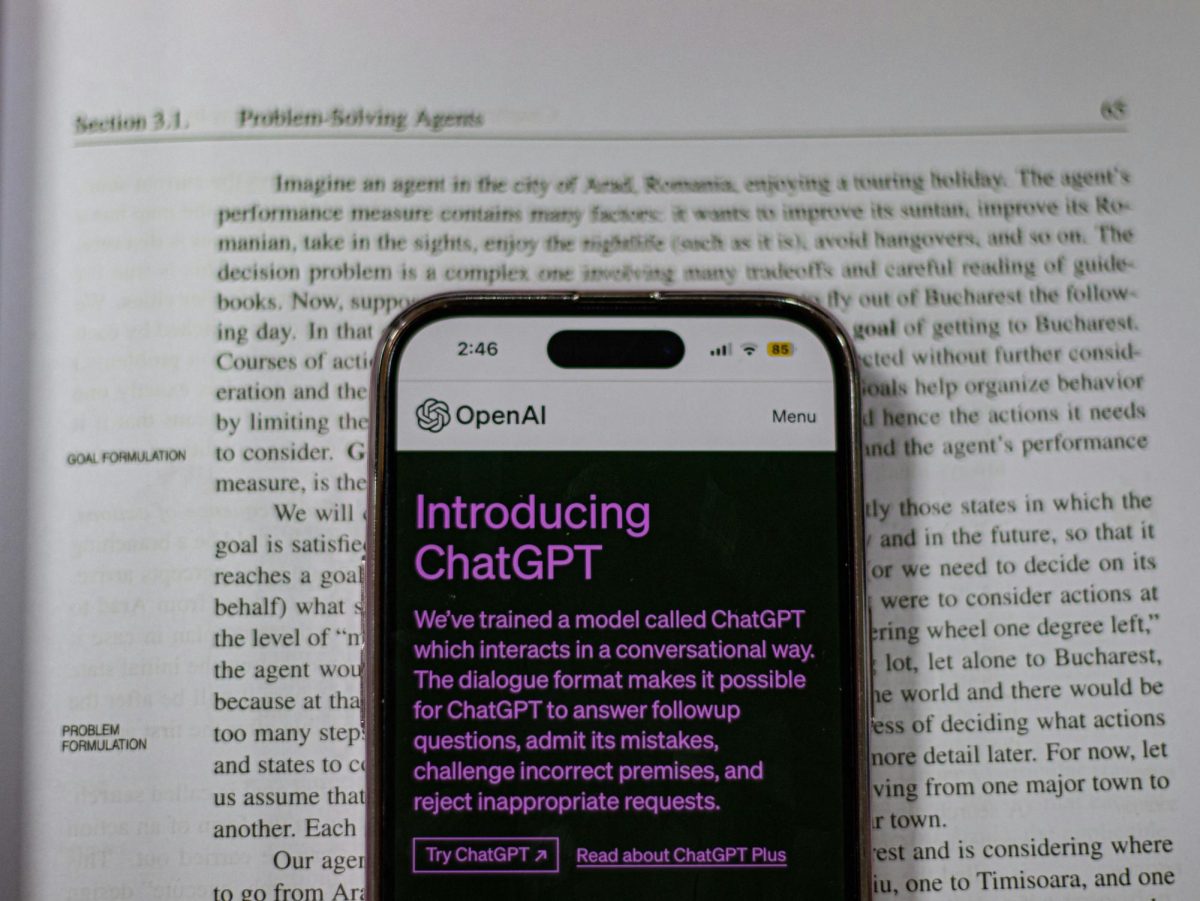Artificial intelligence, otherwise known as AI, is one of the newest and most defining inventions to come out of the 21st century. With AI’s ability to conduct human-like tasks such as problem solving, communication, and reasoning companies around the world such as Apple and Google have all rushed to implement the new technology into their products and services.
However, the steady rise of access to AI programs has led to a shift in the education system. A study conducted by the Pew Research Center found that 22% of Americans interact with AI multiple times a day or on a constant basis with over half of young adults between the ages of 18 to 29 reportedly interacting with AI multiple times a week.
With many students now turning to AI programs such as ChatGPT for help with writing essays, brainstorming ideas and solving equations for homework assignments, colleges and universities are now facing an ethical dilemma: should AI be permitted and integrated into college level classes?
As of 2025 many college campuses have begun to implement policies regarding the usage of AI, with some colleges choosing to embrace the new technology as a tool or alternative form of learning and others prohibiting its usage in fear of cheating and plagiarism.
Many argue that when used as a tool, AI can be a helpful learning resource due to its ability to provide students with personalized learning, streamline tasks, and increase the accessibility of educational resources all at the push of a button. But at what point does a tool become a crutch?
Aside from the negative environmental impacts that AI poses on the planet, using AI as a tool removes one of the key components of learning: human interaction. Although AI platforms can provide written or audio responses that mimic human speech and mannerisms, it does not replace the social aspect of learning.
Asking questions to professors, engaging in collaborative discussions with peers and participating in group projects all help to strengthen interpersonal skills which are fundamental in both professional and personal settings. According to Cornell University, research has shown that students who participate in collaborative learning methods achieve deeper learning.
On the surface having access to immediate information seems beneficial and efficient but it encourages instant gratification rather than building analytical skills. Even if AI is only being used to guide students through simple tasks such as brainstorming or summarizing information, it limits creativity and critical thinking. A recent self-reported study completed by Microsoft found that generative AI has the potential to hinder problem solving abilities and critical engagement in work settings.
Additionally, while it is true that using AI can help with answering questions on a variety of subjects, at its current point in development AI also has a tendency to provide users with entirely or partially erroneous responses. Research conducted last month by the Columbia Journalism Review found that multiple AI chatbots incorrectly cited text from articles more than 60% of the time.
The large potential for error combined with the uncertainty of its success in educational environments has cast the future of learning with AI in a realm of uncertainty. Due to the fact that AI has only become widely accessible to the general public within the last five years there is a lack of data surrounding AI use in educational settings. Universities and colleges who are in favor of AI have only just begun to implement AI in classrooms, meaning that long term studies on the impact of AI learning have yet to be completed.
Although it is likely that AI will only continue to grow and further integrate into the everyday lives of millions of people across the globe, it is important that administrators understand the long-term impacts of using AI programs in an educational environment. Until more research has been conducted on AI learning and it has undergone significant improvements, it is necessary to consider its potential risks alongside its benefits.



